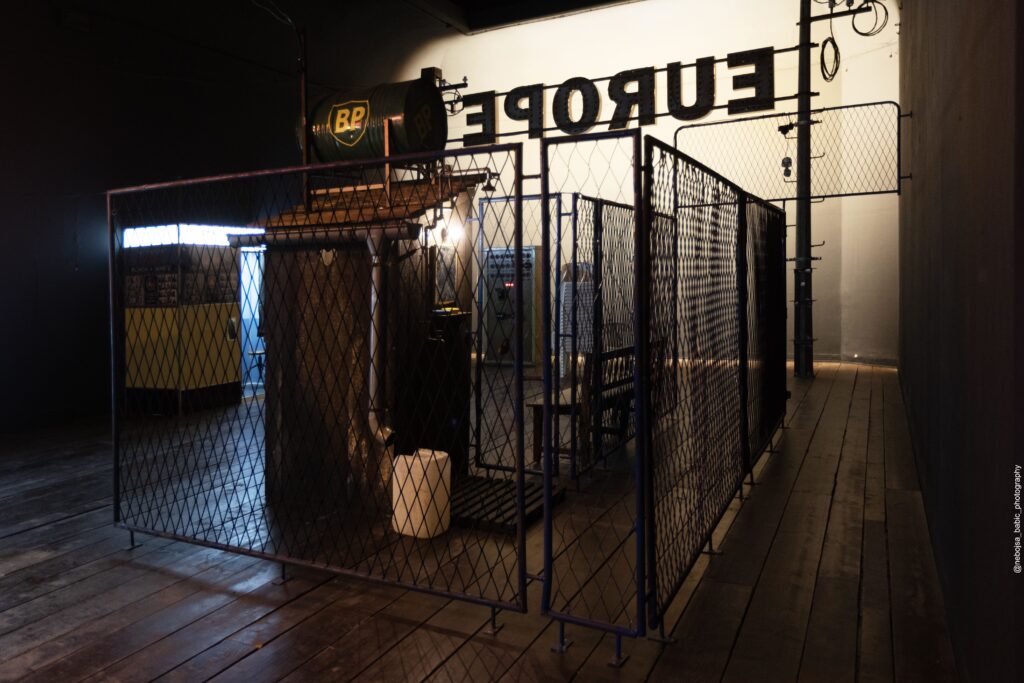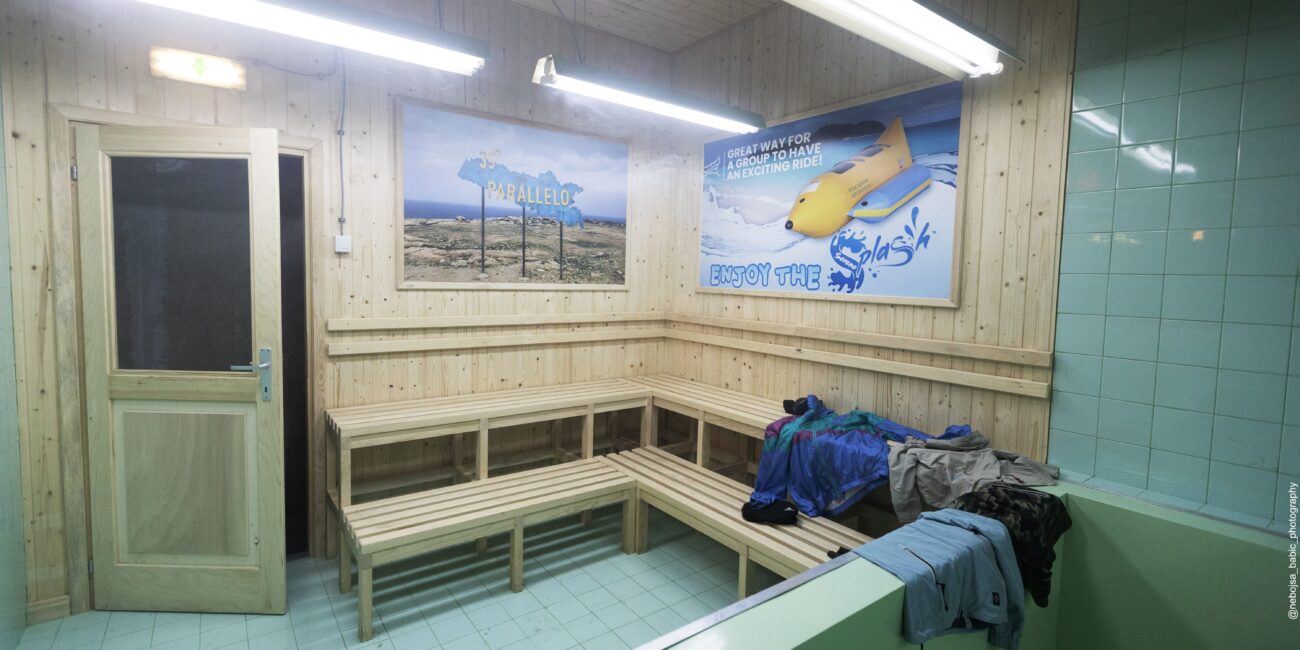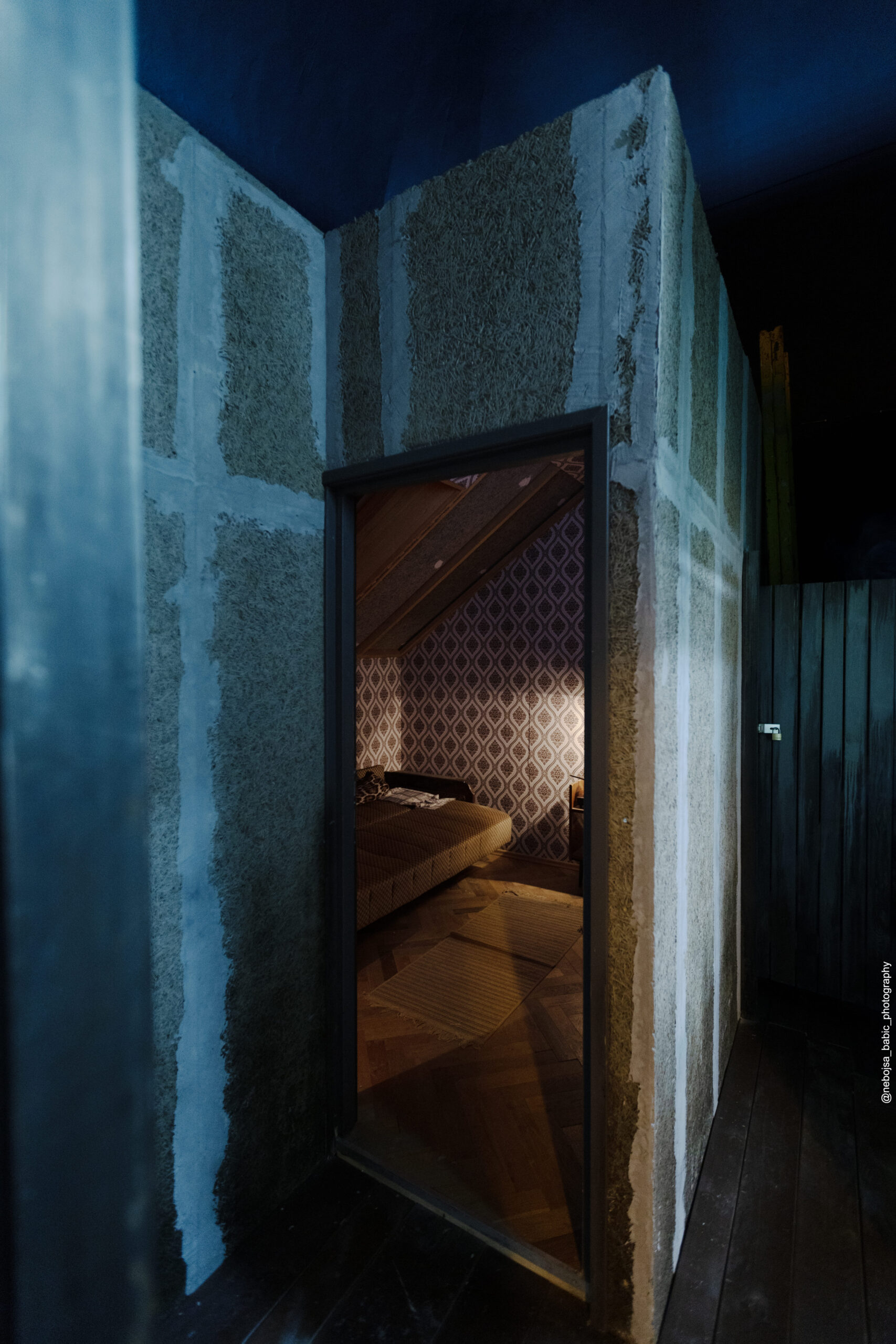Behind ‘Exposition Coloniale’: An Exclusive Interview with Ksenija Samadrzija, the Curator of the Serbian Pavilion
We at I:BICA are delighted to welcome Ksenija Samardžija for what promises to be a profoundly engaging interview. We would like to extend our sincerest congratulations and express our gratitude to Ksenija for agreeing to share her insights with us. In this interview, we will delve into the captivating themes of the “Exposition coloniale” and explore how it resonates with the Venice Biennale’s theme, “Foreigners Everywhere.” Ksenija’s curatorial perspective will guide us through the exhibition’s complex narrative that confronts the historical and contemporary impacts of colonization, identity, and displacement. We will uncover the thought processes behind the exhibition’s spatial and structural designs and discuss the potent messages it aims to communicate about societal divisions and personal complicity.
“Exposition coloniale” confronts the enduring consequences of colonialism. In what ways do you believe this historical backdrop intersects with the Biennale’s theme of “Foreigners Everywhere”?
The illuminated phrase “Stranieri Ovunque – Foreigners Everywhere” displayed in neon tubes in various colors and languages is used to convey the universal concept of being a foreigner. This message, produced by the collective Claire Fontaine in 2004, was used as the curatorial theme by Adriano Pedrosa for the 60th edition of the Venice Biennale. Exposition coloniale appropriates themes referencing the 1931 Paris exhibition, which showcased colonial territories in a grand spectacle, with its two hundred buildings representing the different colonies and territories, stretched over an area of 110 hectares. Using this narrative of progress and achievements of capitalism, Denić highlights the idea that we are currently living in a state of colonization by large corporations and consequences that made scars by misalignment in these historical processes.

Copyright © Nebojsa Babic for Serbian Pavilion. All rights reserved.
How does the exhibition challenge the audience to rethink historical and contemporary forms of colonization and their impact on the notion of foreignness?
The exhibition presents a net of information in which Denić demonstrates his mastery of spatial manipulation and placing us in a middle of his play – using contradictories and overemphasizes. With an abundance of possible meanings resulting from our experience and knowledge, tension grows and develops. The broken phone rings, the camera in photo booth reacts with a flash of light – but without photos of ourself, music that comes from the small attic room seduces us with iconic Coca Cola commercial from 1971 with lyrics: I’d like to buy the world a home; and furnish it with love; grow apple trees and honey bees..
Given the artist’s theatrical background, which infuses the exhibition with a unique narrative style, how do you leverage this dramatic approach to highlight the socio-political issues tied to colonial legacies in your curation?
The theatrical experience that Denić has provided the possibility of autonomy to lighting, sound and stage elements. As Stevan Vuković states in the catalog text, confirms the process of work as: “This blend of ‘real and imaginary space’ brings us back to Julia Kristeva’s statement, according to which ‘disturbingly close strangeness happens when the boundaries between imagination and reality are blurred’ (Kristeva 1991, 188). Therefore, it is important to emphasize that in the installation Exposition Coloniale there are no readymade objects. Everything was designed by the artist and produced in accordance with his aesthetic code, but the materials and manufacturing principles were the same as those for practical use items.” In this case everything is possible and everything is in service of a total exhibition. “Drama arises between the stage and the audience, not on the stage”. This is the pattern of Brechtian theater that manifests itself through multiple levels, set design, lighting, sound… a theater that keeps the relevance of texts from ancient times and has the capacity to condense time/space and warn us that socio-political macrostructures do not change significantly.

Copyright © Nebojsa Babic for Serbian Pavilion. All rights reserved.
How do the spatial and structural designs within the exhibition serve as metaphors for societal anxieties and divisions?
In the world of architecture, there is a noticeable trend towards both uniformity and chaos. This may seem contradictory, but according to the perspective of the Norwegian architect Christian Norberg-Schulz, these two elements are closely intertwined within a larger crisis he refers to as the disappearance of place and environments that cannot produce images of a satisfactory environment. This crisis is evident in Denić way of reducing of the inhabitant/used spaces. Everything in these spaces is functional, made of solid materials, yet lacks a sense of purpose or true functionality. In this way environments reflect psychology of the place, an image of society, that left a trace of consumerism and brutality, resulting in various manifestations of fragility. For example, in America, about 18% of adults, equating to almost 40 million people, are affected by some form of anxiety disorder. Furthermore, depression is expected to impact a significant portion of the population in the future, regardless of age or background. As Jung proposed, when many people share the same feeling, a new archetype is stimulated within the collective unconscious.

Copyright © Nebojsa Babic for Serbian Pavilion. All rights reserved.

Copyright © Nebojsa Babic for Serbian Pavilion. All rights reserved.
As an artist who has continually navigated life in German-speaking regions, Aleksandar Denić’s ongoing experience of ‘foreignness’ undoubtedly influences the narrative of the exhibition. Could you elaborate on how this theme of displacement is woven into your curatorial approach for the exhibition?
Denić’s collaboration with Frank Castorf brought a fruitful decade filled with recognition, awards, and artistic achievements. The environment from which he comes from can hardly absorb this, as the experience is completely unknown to us. However, I believe that this division between two is a place where the energy of both is accumulates. Displacement is a state of vertigo that has the capacity to fragmentize to the extreme sensitivity. In Denić case this brings enormous vitality and critical independence.
From a curator’s perspective, how do you interpret and present the complexities of an artist’s identity and expression when they are perceived as a ‘foreigner’ in the region they work?
Thise was a very sensitive moment. We quickly found ourselves facing potential errors in interpreting the question of the artist’s identity. When texts began to emerge in media with incorrect statements about the status of artists, we understood the complexity of biases and possible interpretations to which we are collectively exposed and marked by recent history. This context cannot be ignored or relativized, is there as an invisible shadow above us.

Copyright © Nebojsa Babic for Serbian Pavilion. All rights reserved.
In our increasingly globalized society, themes of usurpation and control remain sharply relevant. How does “Exposition coloniale” bridge the gap historical colonial themes and contemporary issues like migration and displacement?
We live in a society that has felt the refugee crisis and still has unresolved status of all displaced persons. Migration pressures are immense, and we are not able to understand or to predict the consequences but to adapt to them. Relocations, temporary stays, and exile create environments of temporary, forced conditions that can be inferred anywhere. According to Rem Koolhaas’s words: “People can inhabit anything. And they can be miserable in anything and ecstatic in anything. More and more, I think that architecture has nothing to do with it. Of course, that’s both liberating and alarming.”
Considering the powerful themes of your exhibition, what kind of dialogue or action do you hope to inspire among global audiences?
Our Pavilion receives up to 2000 visits daily, which is an impressive number if we talk about responsibility of the work. The positive feedback that we receive and the global media coverage that we follow are immensely valuable to us. If we talk about dialogue or action, maybe the moments where Denić turns challenging situations into light-heartedness, leveraging humor as social commentary, for me is the proof that audience responds and its another way that reflects the effectiveness that our message deliver on the right place.

Copyright © Nebojsa Babic for Serbian Pavilion. All rights reserved.
We extend our heartfelt thanks to Ksenija Samardžija for her invaluable collaboration with the I:BICA community. Her insightful interview about the Serbian Pavilion at the Venice Biennale has been a true highlight. Ksenija’s expertise as a curator and her thoughtful exploration of ‘Exposition Coloniale’ have provided a deeper understanding of its themes and their resonance with ‘Foreigners Everywhere.’ Her unique perspective and passion have enriched our appreciation of the exhibition and its impact.











